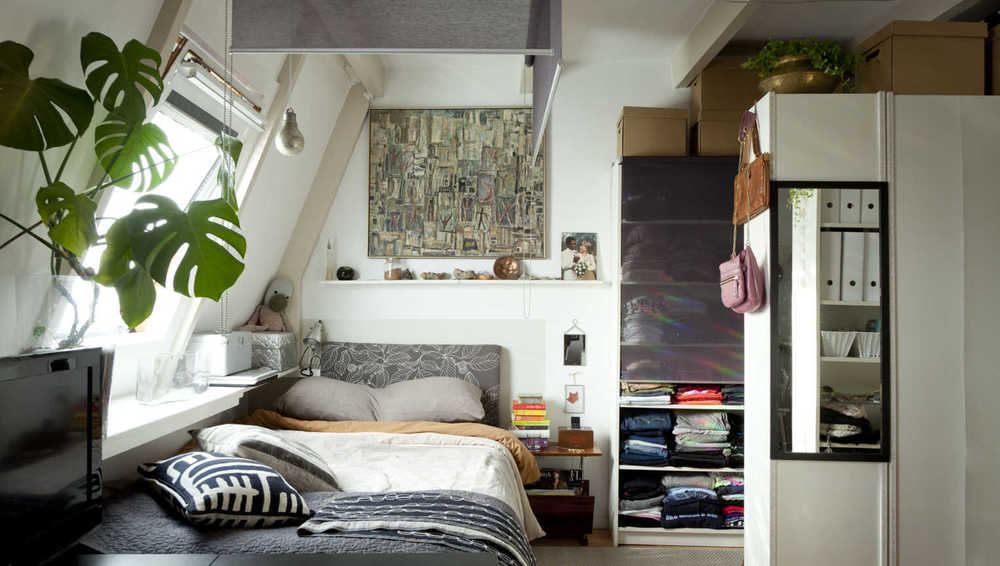
It’s no surprise that blocking is considered an integral part of the knitting process. Those who choose not to block are missing out on a life of even stitches, soft and squishy fabric, and even hemlines. (But that’s another story altogether.)
It would be truly ideal if we all lived in homes with an exclusive knitting room where we could spread out a giant blocking board and lay out ten shawls at a time. Unfortunately, some of us live in New York City apartments where available floor space is a laughable concept.
If you don’t have much room to dedicate to the art of blocking–whether you find yourself in a dorm room, community space, or the aforementioned East Village studio–don’t fear! Years of cramped quarters have led me to the development of a small-scale blocking regimen. Here’s my tips:
Soaking
Leaving my pieces in an industrial ten-gallon bucket in the basement? Yeah, not going to happen. Believe it or not, I soak my knitting in a pasta pot. Bigger projects tend to protrude out of the pot, so this method requires some stirring/monitoring in order to make sure all parts of the piece get equal attention. Oh, and make sure you don’t turn on the stove.
I also use Soak Wash products in order to maximize my blocking results. I plan on doing a more comprehensive review of their products in the future, but for now let me just say: worth it.
Pinning
In order to save space, I don’t use any kind of blocking board. Instead, I use a yoga mat. It’s surprisingly perfect when it comes to fitting into tight corners or sliding from one corner of the apartment to another. And of course, when the blocking is all done, the mat rolls right up and stashes away. (What? You thought I was exercising?)
It very well may just be me, but I find that I am constantly losing all kinds of pins in the blocking process. When you’re blocking in a small and high-trafficked area, a rogue T-pin is the last thing anyone wants to discover. To solve this, I bought a set of Knitter’s Pride Blockers. The large size minimizes how many pins you need (one set works completely for an entire sweater), and they work wonderfully with a squishy yoga mat.
Drying
One concern I really had about blocking in an apartment was potential pests. Bugs love moisture and the idea of having a wet sweater laying on my floor for a few days freaked me out to the max. But I’ve come to minimize the excess moisture with the use of a bath towel places in between the projects and the yoga mat. This helps keep moisture at bay.
Furthermore, if you are able to place the project in indirect sunlight, near a fan, or near an open window, the drying process will be pleasantly expedited and you can stop searching exterminator reviews on Yelp.
Where to Block?
With all of this in mind, you’re ready to compactly block like a pro. But one question does remain–where can I actually block when my floor space is so limited? Here are a few places I have made magic happen:
Under a kitchen table, under the bed, in the bathtub, on a kitchen counter, inside a storage unit, on top of a bookshelf, on a shelf of the aforementioned bookshelf, on the roof (on a hot day)…
Anywhere there is space, it is yours to use!
Remember, blocking doesn’t have to be glamorous, because your knits will be glamorous afterwards.
xoxo